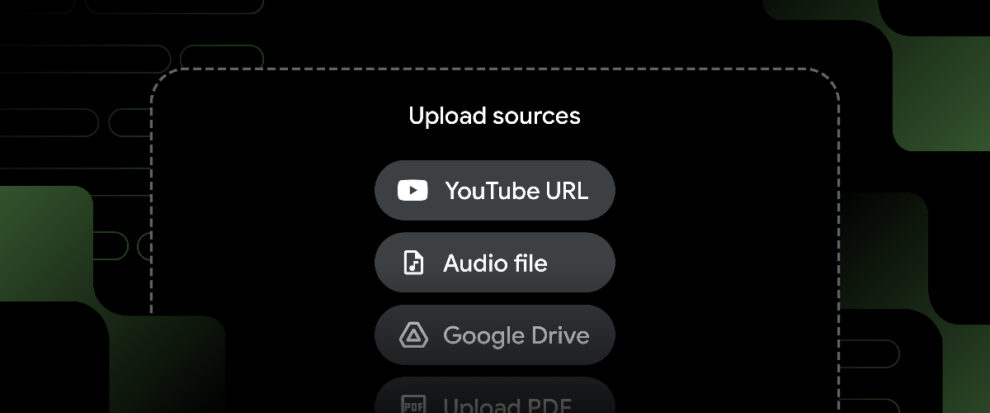Google on Thursday announced new updates to its AI note-taking and research assistant, NotebookLM, allowing users to get summaries of YouTube videos and audio files and even create sharable AI-generated audio discussions, as the search giant aims to broaden the use cases and reach of the tool, which was originally launched as a project at its I/O developer conference last year and expanded to markets including India, U.K., and over 200 countries months after its debut for public access in the U.S.
NotebookLM, which was initially used by educators and learners, has more recently seen a significant shift in its user base and is now attracting more people in a workplace environment.
Raiza Martin, a senior product manager for AI at Google Labs, said in an exclusive interview that the tool’s users are now roughly split, with 50% being educators and learners, and the other half consisting of business professionals.
“People are now sharing notebooks, and it’s creating a network effect,” she told TechCrunch.
This gave the NotebookLM team a push to introduce new features, with the hopes of enhancing its network effect and making the tool popular among people of different demographics.
Earlier this month, NotebookLM added Audio Overview to let users turn their documents into engaging audio discussions. The latest update expands that experience by allowing users to share the Audio Overview generated in NotebookLM with a public URL.
To use the feature, you click on the share icon available on the Audio Overview generated in the tool to get its URL, which you can then copy and share with others.
Martin said that her team saw professionals uploading webpages, resumes, and even their presentations on NotebookLM to generate Audio Overviews, then sharing those with their employers, colleagues, or clients.
NotebookLM also added support for YouTube videos and audio files (such as .mp3 and .wav) as new source types, alongside its existing support for Google Docs, PDFs, text files, Google Slides, and webpages. The new features help users summarize key points from YouTube videos and generate takeaways and insights from the audio recordings they have of their study sessions or projects.

Martin told TechCrunch that since Google Labs has a small team working for NotebookLM, powered by the company’s multimodal large language model Gemini 1.5 Pro, every new feature the team adds to the tool is based on user feedback.
“What’s interesting about AI tools is that a lot of assumptions change,” she said. “What might have been useful last year might not be useful this year.”
In June, Google expanded NotebookLM access to over 200 countries after launching it initially in the U.S. late last year.
Martin told TechCrunch, without disclosing specific numbers, that while NotebookLM still has a majority of its usage in the U.S., Japan has emerged as the next big market for the tool. The executive also underlined that some of its users are using NotebookLM to get AI-based summarization in languages different from what they set on the tool.
“In Japan particularly, we see a lot of documents that are not in Japanese, but NotebookLM is set to Japanese,” she said. “So people are querying in their native language, using it with probably complex and dense documents in English.”
Google said that the information users upload to NotebookLM stays private and is not used to train an AI model. To access the tool, users have to be at least 18 years old.
Still, NotebookLM faces challenges inherent to its nature as an AI tool. One is that if users rely too much on NotebookLM, they might quickly lose the habit of reading long-form content and research papers. This could also lead to the problem of oversimplification.
Martin told TechCrunch that her team is very well aware of these concerns.
NotebookLM provides clickable citations from the content users upload to let users go deeper into the summarized notes.
“We try to encourage you to read your original text. We encourage you to double-check all the answers that come out of NotebookLM… You could read SparkNotes or the actual book; it’s always up to you,” she said.
NotebookLM is currently limited to the web, though Martin indicated that its mobile apps may come sometime next year.
Meanwhile, the team is busy adding more new features. These will be focused on adding more support on the input side and new sources for outputs, Martin said.









